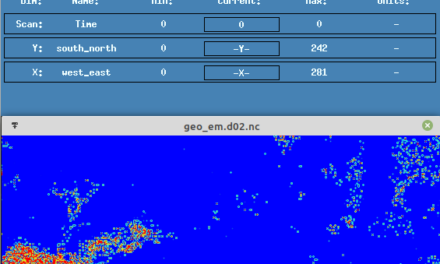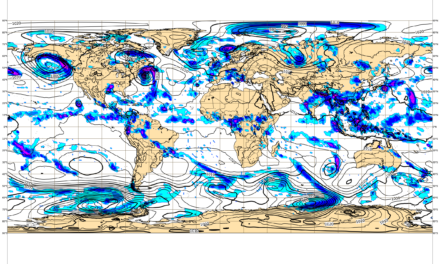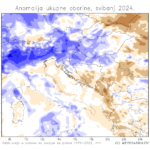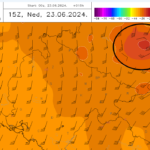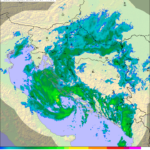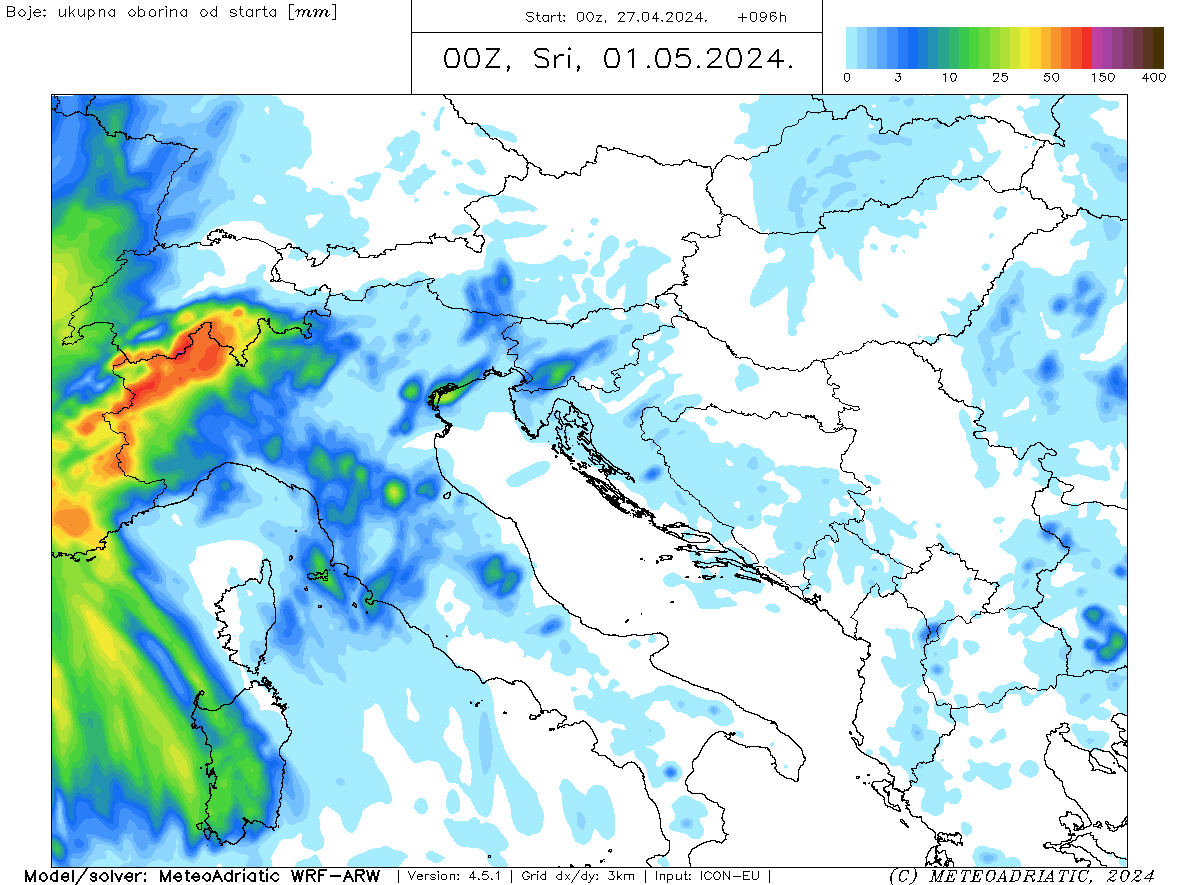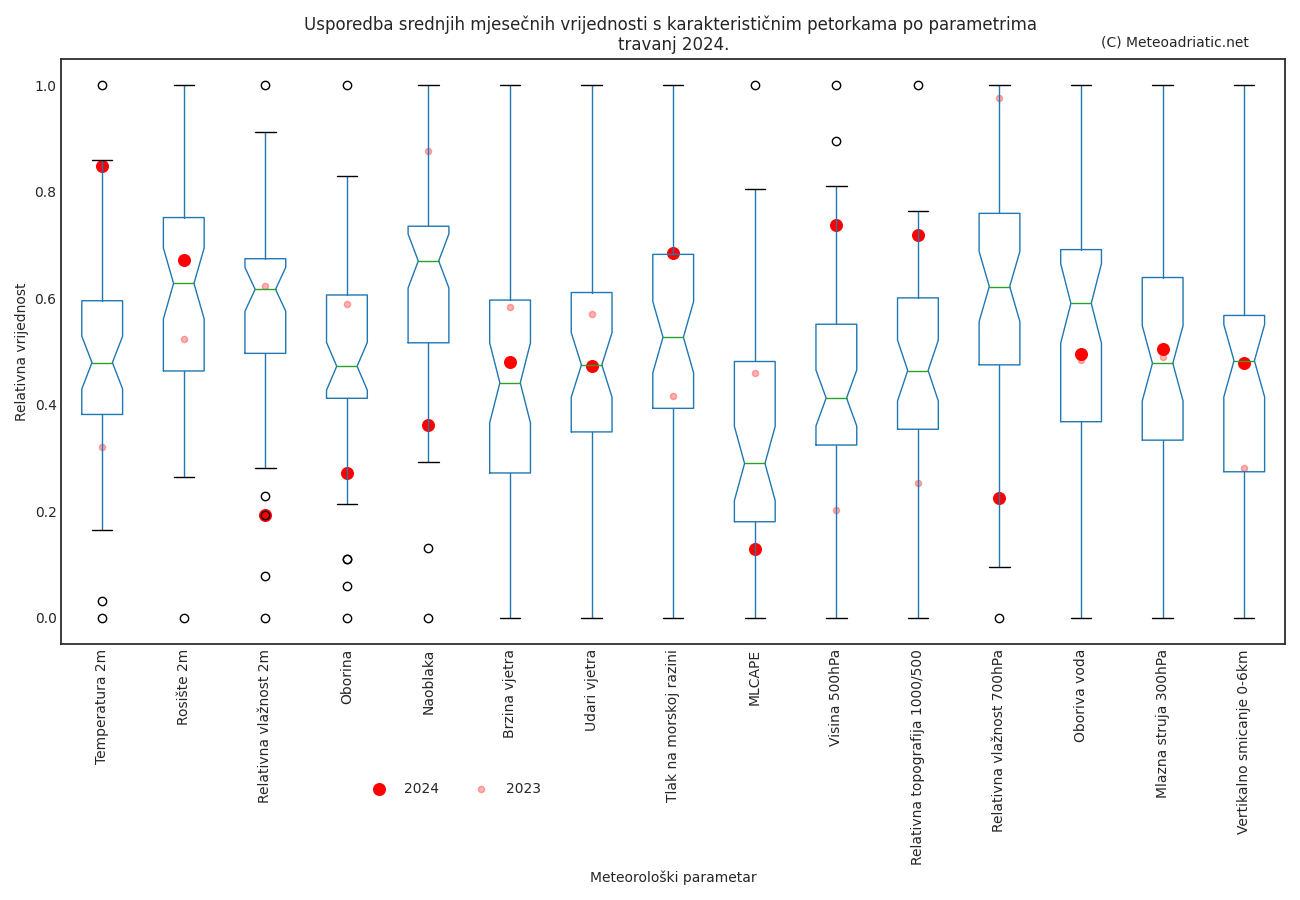Ovih dana smo imali manji problem s WRF modelom pa nam je želja ovdje dokumentirati uzrok i rješenje, s obzirom da pretragom na google doslovno nigdje nismo pronašli isti problem. Razlog tome je činjenica da vjerojatno najveći postotak korisnika WRF modela upotrebljava ulazne podatke koji su raspoređeni na nivoima tlaka a ne nivoima modela. U takvim uvjetima do ovog problema ne može doći. No, koriste li se nivoi modela (npr. ICON ili ECMWF model levels), može se dogoditi da vam model radi ispravno sve do jednog trenutka kad se geopotencijal najvišeg nivoa modela toliko spusti (uslijed vrlo hladne zračne mase) da tlak na najvišem nivou ulaznog modela postane viši od najvišeg konfiguriranog u WRF modelu.
U tom slučaju u nekom terminu pri izvođenju real.exe programa pojavit će se sljedeća greška:
grid%p_top > previous value
i real.exe će završiti s izradom bočnih uvjeta prije zatraženog krajnjeg termina putem nameliste. Ako dozvolite programu wrf.exe da radi na takvim ulaznim rubnim podacima, model će također prestati s radom kad dosegne taj trenutak i javit će grešku kako slijedi:
ERROR: Ran out of valid boundary conditions in file wrfbdy_d01

Rješenje za ovaj problem se sastoji od spuštanja najvišeg nivoa WRF modela na manju visinu (tj. na viši tlak), a to se u namelist.input konfigurira parametrom:
p_top_requested = 5000,
pri čemu u ovom primjeru 5000 je tlak najvišeg nivoa modela u Paskalima (tj. 50 hPa). Ova vrijednost bi trebala biti dovoljna za sve umjerene širine i pri najvećoj hladnoći zračnih masa za korištene ICON model nivoe pod uvjetom da preuzimate i njegov najviši nivo (tj. br. 1). Ta vrijednost je također i zadana vrijednost u WRF modelu. Vjerojatno bez problema možete podići vrh i do 4500 ili čak 4000 Pa, no nama se je real.exe “rušio” na vrijednosti 3700 hPa kad je stigao u domenu vrlo hladan zrak.
English version for visitors that are directed here by online search:
Recently, we encountered a technical issue with the Weather Research and Forecasting (WRF) model that warranted detailed investigation and documentation, especially since a similar problem could not be identified through extensive online research. This issue predominantly arises due to the specific nature of the input data used in the WRF model. It is pertinent to note that a significant majority of WRF model users typically employ input data distributed at pressure levels. Under these circumstances, the problem we experienced is unlikely to manifest randomly. However, in cases where model levels are utilized, such as with the ICON or ECMWF model levels, a specific type of crash may arise.
This issue might come up when the geopotential at the model’s highest level decreases substantially, often due to the presence of an extremely cold air mass. Consequently, the pressure at this uppermost level of the input model exceeds the maximum level configured in the WRF model. During the execution of the real.exe program, this anomaly triggers a specific error as follows:
grid%p_top > previous value ,
leading to the premature completion of the boundary conditions building process in the real.exe, before reaching the intended endpoint as defined in the namelist.input file.
If the WRF model (wrf.exe) is allowed to run with such compromised boundary data, it will cease operation upon reaching the affected point, displaying the error message:
ERROR: Ran out of valid boundary conditions in file wrfbdy_d01 .
The resolution to this issue involves adjusting the highest level of the WRF model to a lower altitude (or, conversely, a higher pressure). This adjustment is implemented in the ‘namelist.input’ file, using the parameter
p_top_requested = 5000,
In this instance, ‘5000’ represents the pressure at the model’s highest level, expressed in Pascals (equivalent to 50 hPa). This pressure setting should generally be adequate for most moderate latitudes, even in the coldest air masses, provided that the highest level of the used ICON model (i.e., Level No. 1) is also included. Notably, this value is the default setting in the WRF model. Adjustments to increase the peak pressure to 4500 or even 4000 Pa might run fine, too. However, during our operational runs, we encountered failures at a setting of 3700 hPa, when the domain was exposed to extremely cold air. Hope this post helps someone.

